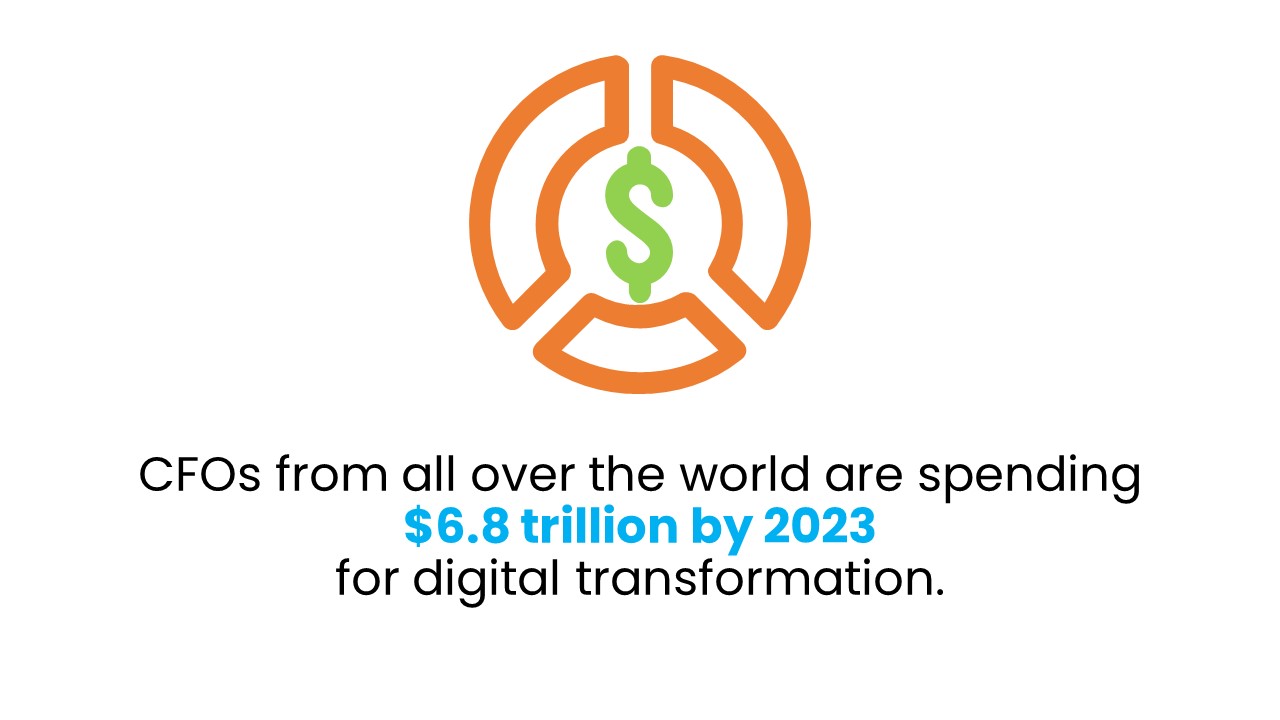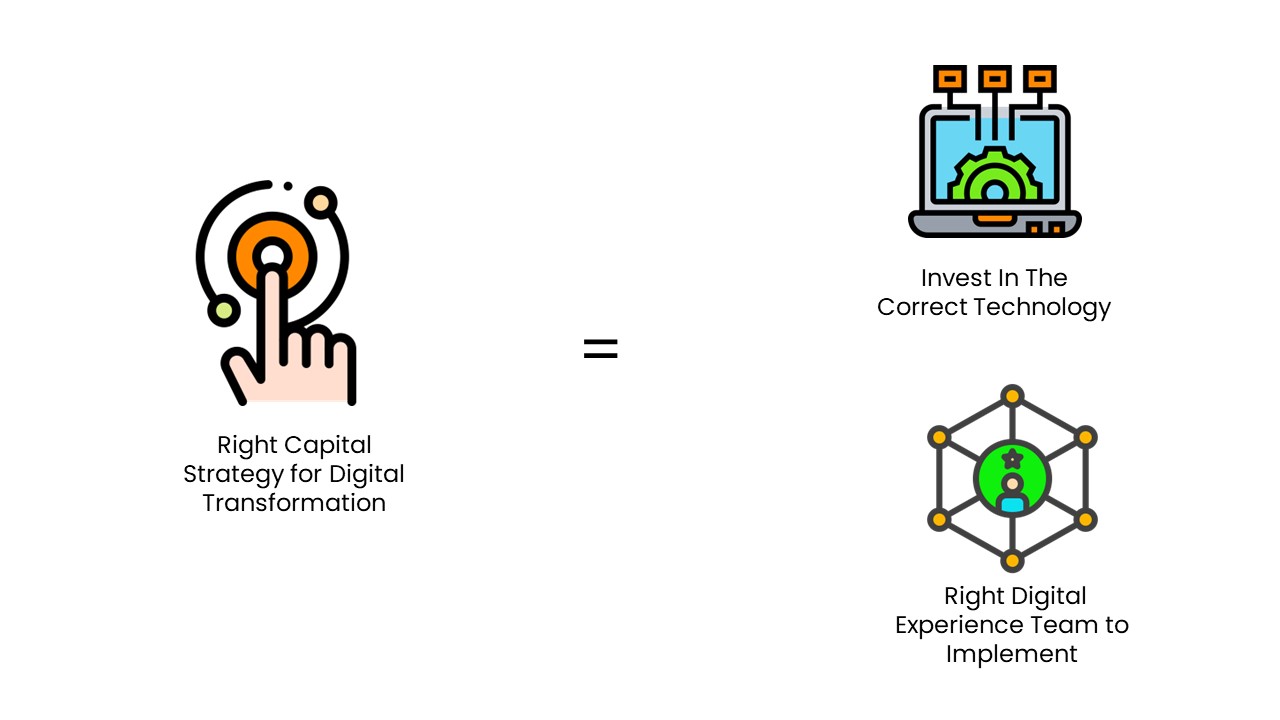What will you learn?
- Why having a capital strategy for smart finance is important?
- How to set up an appropriate budget for smart finance?
- ROI in digital transformation
The business transformation that leaders predicted would happen in five years is about to manifest itself in the upcoming quarter. The Silicon Valley Bank (SVB) collapse has caused an economic disruption costing billions of dollars.

This is high time for CXOs to decide whether to continue with primitive methods, the effects of which are now waning or accelerate through the chaos with the help of digital business transformation, which is both practical and essential.
But are CXOs financially prepared to accelerate this transformation?

One of the major obstacles that could derail the entire project of the digital transformation process is the lack of a capital strategy. Most business leaders find it confusing to set up a little budget for creating effective digital transformation operations. An organization must invest in the correct technology and the digital experience team to implement it in order to drive digital transformation.
The entire procedure needs a significant amount of money, which may initially lead to lower revenues, but over time, this investment will become one of the key factors in your company's success. Business leaders' visions are blurred when it comes to deciding a budget for digital transformation.
How do you set up an appropriate budget?
1. Collaborate and involve as many people from your organization as -
You cannot and should not include everyone in your organization in the budgeting process.
Due to the widespread of digital transformation, a collaborative approach is required to ensure that all aspects of fundamental business processes are taken into account when creating your budget.
But, when it comes to digital transformation, it's necessary to take into account alternatives to those conventional budgeting procedures, which have generally been controlled on a departmental basis, with the financial director approving a high-level budget before it is given to the team. You run the danger of establishing bottlenecks that will divert investment away from the important revenue-generating activities if you don't have this comprehensive picture.
2. Create a collective vision -
You'll need to get sign-off from higher management, which requires the financial decision-makers to support your plan. Thus, it's imperative that you start early in educating the benefits and necessities of the digital transition.
Even if you believe that everyone in your company is aware of this, this is frequently not the case. In fact, it's simple to assume a shared vision at the outset because budgets are typically agreed upon in advance without any understanding of the complexity or dependencies involved, only to discover later that you don't have the resources you need to move as quickly as you'd like or achieve your desired results.
A dedicated "discovery" phase can assist you in better articulating your vision and communicating it to stakeholders, especially if it involves the creation of low-fidelity deliverables like prototypes and proofs of concept, which enable you to demonstrate your ideas and objectives in a highly visual way and boost confidence to help secure buy-in.
3. Consider creating a flexible budgeting plan -
While rigorous budget plans may provide high levels of predictability, they can seriously impair your capacity to adapt to change, putting you in danger of being surpassed in your efforts to undergo digital transformation by competitors who are more flexible and leaner. Yet, even after adding more freedom, you'll still need to provide the governance needed by people in charge of allocating funds because they won't be eager to give up all authority.
A paradigm that allocates funds for "epics" (vast, overarching undertakings) while shifting the accountability for more specific decisions away from budget holders and towards individuals with a closer working understanding of individual efforts is one way to strike a compromise between these conflicting needs.
To help you steer closer to reality, you can adjust the basic structure of your budgets. Some organizations are choosing to plan two six-month budgets instead of one annual budget cycle as the rate of change in the digital landscape continues to outpace that cycle, increasing the frequency with which they can assess project deliverables and monitor the market for potential opportunities. In order to reduce waste and speed up the rate of return, the budget can then be more swiftly reinvested in profitable areas and stopped where value isn't being realized.
4. Think about any potential "hidden" charges
Probably there will be additional expenses that need to be covered by your budget for the digital transformation in addition to the diverse needs of the various business operations inside your corporation. They are simple to ignore, so be sure to conduct thorough needs-gathering exercises to highlight any supplementary requirements.
ROI in digital transformation
According to Avanade, 96% of its respondents claim to have a digital transformation strategy, but nearly half claim that their organization is growing weary of the transformation efforts.
To achieve organizational goals, whether they involve automating manual processes or utilizing digital tools to collaborate and work more effectively, leaders must prioritize digital transformation—moving from analog to paperless technologies.
Calculating the return on investment (ROI) of a digital transformation is a critical component for assessing the success of a business's digital transformation. According to a report by Avanade, businesses with successful digital transformation initiatives can anticipate a 17% return on investment (ROI) over the following year.
Conclusion -
Only 11% of the business leaders in a recent Gartner report admitted to successfully implementing the transformation at scale, despite 66% of them claiming to have plans for a digital business transformation.
In this volatile business environment, it is important for businesses to invest in smart finance technologies. Creating the right budget and choosing the right solution will determine the success of a company.
Want to start your Digital Transformation Journey today?
Click here to connect with one of our Digital Transformation Experts.

